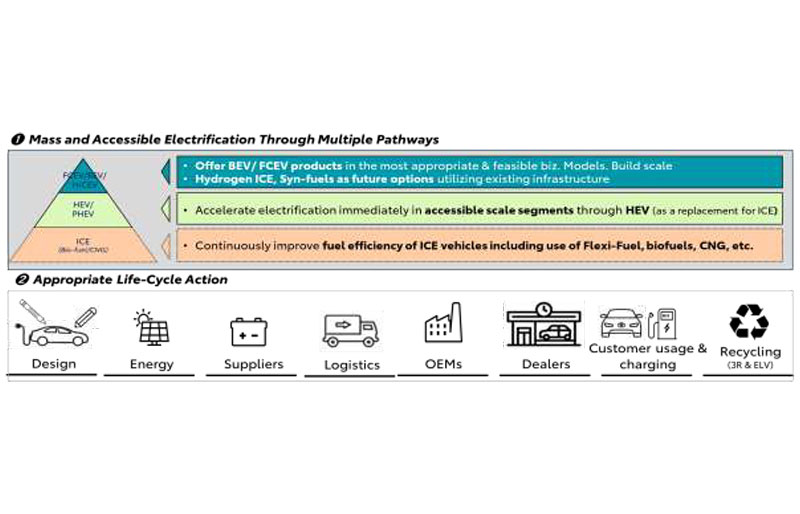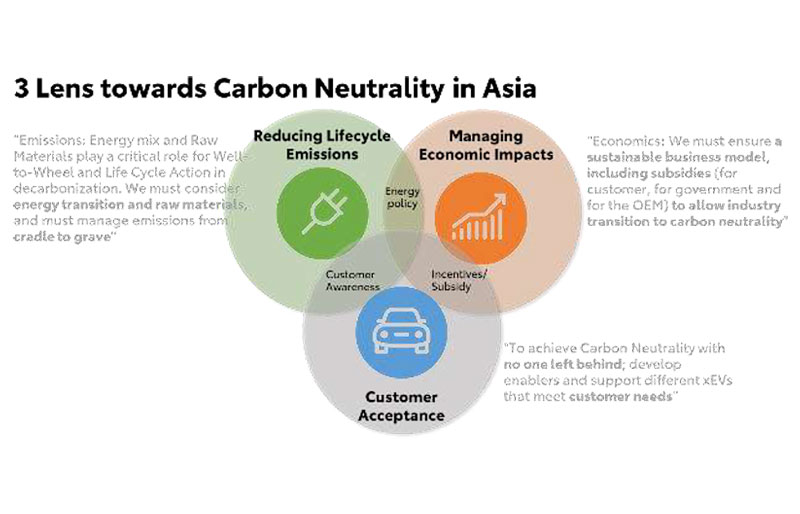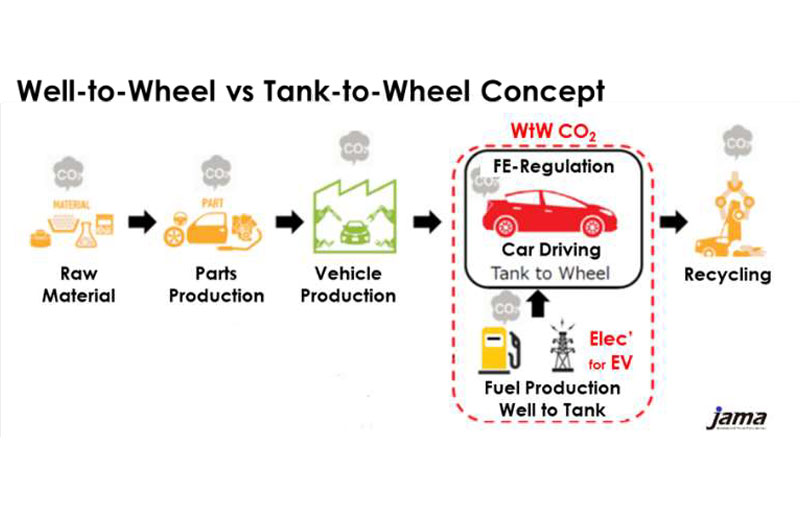Posted on December 18 2022
Toyota Asia’s Multiple Pathways towards Carbon Neutrality
Thailand, 18th December 2022: Mr. Akio Toyoda, President & CEO of Toyota Motor Corporation (“Toyota”), and founder and team owner of ROOKIE Racing, participated under the driver name “Morizo” in the 25-hour endurance race in Thailand over December 17th and 18th in Toyota’s hydrogen-powered Corolla. This was the first time that this technology has been used in a race outside Japan. This was also an opportunity for Toyota to demonstrate its multiple pathway approach to accelerate actions towards Carbon Neutrality, by displaying and demonstrating various clean technologies, including Hybrid Electric Vehicles (HEV), Plug-in Hybrid Electric Vehicle (PHEV), Battery Electric Vehicles (BEV) and Fuel Cell Electric Vehicles (FCEV) that offer diverse environmentally friendly choices to customers across Asian markets. Mr. Hao Quoc Tien, CEO of Asia Region, and other senior executives from Toyota, joined Mr. Toyoda over the 2 day program.
Developing and showcasing the Hydrogen powered internal combustion engine vehicle (HiCEV) marks another step in Toyota’s technological efforts towards achieving global commitment of Carbon Neutrality by 2050.
Toyota believes that ‘carbon is the enemy’, and hence Toyota believes in a Multiple Pathway approach by offering customers the choice of various vehicle powertrain technologies, including HEV, PHEV, BEV, FCEV, HiCEV, or even bio-fuel vehicles. This allows every customer to select cleaner and greener mobility options that are suitable for their economic circumstances, energy source, charging infrastructure readiness, industrial policies and usage needs. This multiple pathways approach allows decarbonization to start immediately, without waiting for the maturity of all the enablers such as infrastructure and affordability, and hence can gain scale through accessibility. This is in line with Toyota’s “Mobility for All” objective, and allows everyone to participate in the decarbonization journey. Toyota believes that the impact of clean technology can be felt only with its wide adoption across global markets. Beyond new vehicles, Toyota also believes in appropriate life-cycle action to truly decarbonize mobility and its ecosystem, and earnestly tackle climate change from cradle to grave (Image 1 for details).
Image 1:

Toyota has carefully considered the best way to move to mass and accessible electrification in each market, through a ‘3 Lens’ approach that allow the company to best understand the enablers to accelerate carbon neutrality and electrification. These are 1) Emission Reduction, through well to wheel and lifecycle actions, 2) Economic Impact, including for the customer, government and industry, and most importantly 3) Customer Acceptance (Image 2 for details).
Image 2:

Specifically, for Emission Reduction, the consideration is to evaluate the total emissions, including tailpipe (tank-to-wheel) power generation (well-to-tank; e.g. fuel, electricity, etc.) and life cycle emission (from manufacturing and life-time usage) (Refer Image 3)
Image 3:

In multiple markets, it is recognized that power generation mix, including renewable energy ratio, plays a critical role in defining levels of emission in each market.
Enabling mass adoption of electrified vehicles (xEVs) also needs Economic Impact enablers. xEVs are typically costlier due to the cost of the battery, and other advanced technology. It is believed that to improve accessibility, there should be incentives to promote all xEVs adoption fairly based on emissions. BEV and PHEV will also need charging infrastructure, where investment and incentives are required. Governments’ incentives and subsidies are needed to accelerate xEV adoption and infrastructure roll-out, while also balancing the transition throughout the overall supply chain and ancillary industry
Finally, and perhaps most importantly, the mass adoption of clean mobility options depends on Customer Acceptance. Especially in emerging markets in Asia, customers are very diverse in terms of their mobility needs, usage conditions, purchasing power, societal contexts etc. Considering that Mobility provides Opportunity for education, employment, trade, healthcare etc., Toyota aims to provide clean and green “Mobility for All” and in line with the Sustainable Development Goal of ‘Leave No One Behind’. Under this condition, there is a need to address customer expectations towards electrification, including convenience and accessibility to infrastructure, price, safety, range and charging time. Unlocking such conditions would support a quicker and broader electrification shift.
There is a need to move from words to actions. During the race in Thailand, Toyota emphasized that a diverse market needs diverse choice wherein we can achieve carbon neutrality and mobility for all at speed and scale. The HiCEV, though in its early stages of development and usage, represents yet another action on our pathway to a cleaner and greener planet.
Overview of TKM
| Company name | Toyota Kirloskar Motor Private Limited |
| Equity participation | Toyota Motor Corporation: 89%, Kirloskar Systems Limited: 11% |
| Number of employees | Approx. 6,000 |
| Land area | Approx. 432 acres (approx.1,700,000 m2) |
| Building area | 74,000 m2 |
| Total Installed Production capacity | Up to 3,10,000 units |
| Established | October 1997 (start of production: December 1999) |
| Location | Bidadi |
| Products | Innova HyCross, Fortuner manufactured in India. |
| Installed Production capacity | Up to 1,00,000 units |
| Start of Production | December 2010 |
| Location | On the site of Toyota Kirloskar Motor Private Limited, Bidadi |
| Products | Camry Hybrid, Urban Cruiser Hyryder, Hilux |
| Installed Production capacity | Up to 2,10,000 units |
*Vellfire imported as CBU